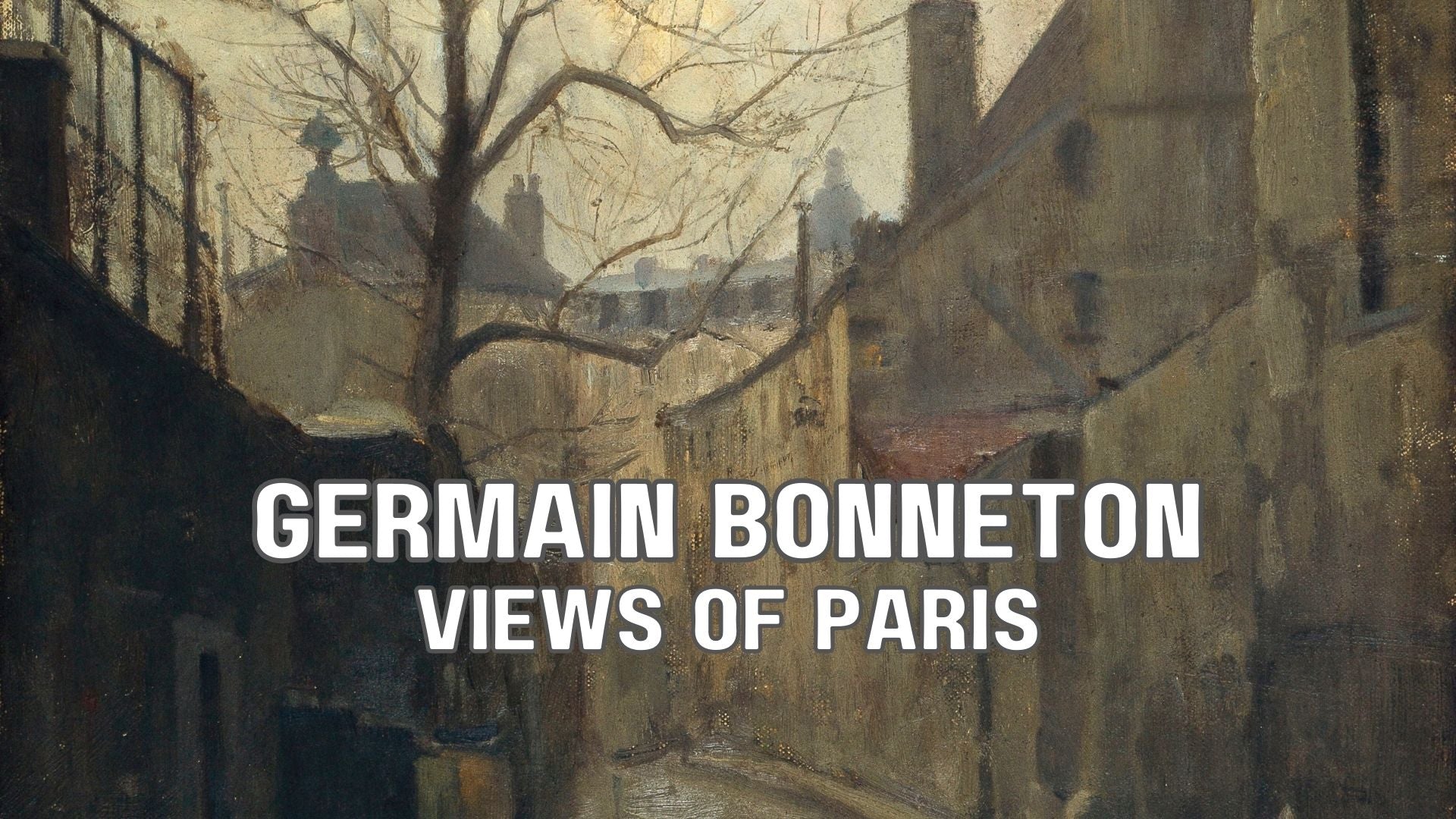Germain Eugène Bonneton (1874–1914) was a French painter known for capturing the changing landscapes and riverbanks of Paris, particularly areas along the Bièvre River. Born in Tournon, Ardèche, Bonneton moved to Paris, where he painted in a naturalist style reminiscent of French urban realism. His life in Paris, specifically around Rue Pascal, deeply influenced his work. Bonneton’s paintings often portrayed the hidden parts of the city and the effects of urban development on these secluded areas, which became subjects of historical value after his untimely death in 1914.
The Great Flood of Paris in 1910
Bonneton was particularly drawn to capturing the 1910 Great Flood, one of the worst natural disasters in Paris's history. The Seine River overflowed, inundating streets and neighborhoods, turning Parisian boulevards into canals. His paintings of the flood offer not only artistic depictions but also a form of historical documentation, showing how Parisians adapted to the flood with makeshift boats and elevated walkways. These works preserve memories of Paris’s resilience and transformation during this dramatic event, which changed the urban landscape and spurred infrastructural upgrades.
The Bièvre, Cordelières Street (1900)
The Bièvre River and Urban Change
Many of Bonneton’s paintings feature the Bièvre River, a small tributary that once ran through Paris but was progressively culverted and hidden underground due to sanitation concerns and urban expansion. In his paintings, the Bièvre appears as a quiet, rural contrast to the bustling city—a serene backdrop where urban encroachment meets natural landscapes. His works depicting the Bièvre capture a now-vanished aspect of Paris, preserving the memory of this lost river. As the Bièvre was covered over, Bonneton's paintings became invaluable visual records of an element of Parisian geography erased by modernization.
The Bièvre, rue de Valence (1900)
Historical Significance
Bonneton’s paintings serve as an artistic chronicle of Paris’s changing urban landscape during the late 19th and early 20th centuries. His commitment to depicting the overlooked and evolving parts of the city grants us insight into Paris before it fully transformed into the modern metropolis known today. Bonneton’s works continue to offer historians, urban planners, and art enthusiasts a unique view of Parisian streets, rivers, and forgotten corners, emphasizing the intersection of nature and city life during a period of significant change.
Related Articles
Images of Paris
References
- Centre Pompidou. "Germain Eugène Bonneton."
- Artnet. "Germain Eugène Bonneton - Biography."
- University of Vienna, Database of Modern Exhibitions. "Germain Eugène Bonneton."





